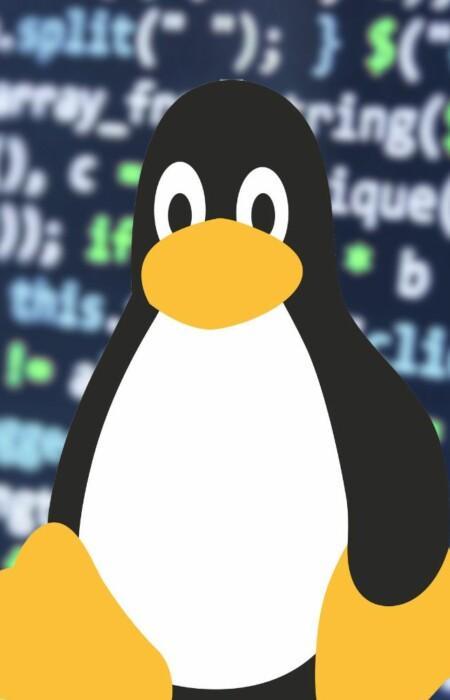CompTIA A+ (core series) (220-1101 & 220-1102)
CompTIA A+ is a performance-based qualification ideal for roles in IT operations and technical support. CompTIA A+ practitioners are experts at identifying potential issues and can think on their feet to solve even critical IT problems effectively. The CompTIA A+ syllabus also upskills practitioners to connect users to the data required to perform their jobs, regardless of the devices or hardware being used.
As the only industry-recognized credential with performance-based assessments, CompTIA A+ has become a popular standard for end-point management and technical support roles. The qualification itself is also regularly updated to reflect the most in-demand core skills and abilities for the modern, IT-powered workplace. Kickstart your CompTIA A+ training today with Good e-Learning!
Koulutusmuoto
Online
Kesto
80 tuntia
Hinta
879 €
Sertifiointi
Kyllä
Target Group
Who is this course aimed at?
- Service Desk Analysts
- Help Desk Technicians
- Technical Support Specialists
- Field Service Technicians
- Associate Network Engineers
- Data Support Technicians
- Desktop Support Administrators
- End-User Computing Technicians
- Help Desk Technicians
- System Support Specialists
Goal
What will you learn by taking this course?
- IT infrastructure support practices, such as advanced device connectivity troubleshooting, end-point management, and basic networking
- How to identify, use, connect, configure and support hardware for mobile, PC, and IoT, including connectors, peripherals, and components
- Best practices for data storage, recovery, and management
- How to perform essential baseline security functions, such as addressing privacy concerns, detecting and removing malware, device hardening, and optimizing physical security
- How to install, support, and configure Windows OS, as well as understand other operating systems like Linux, Mac, iOS, and Android
- How to administer client and cloud-based SaaS software
- Troubleshoot and solve problems related to core service and support challenges
- Best practices for documentation, IT support scripting, and change management
- How to troubleshoot software on PC and mobile devices for functions like application security
- Different types of networks and connections, including WIFI, TCP/IP, and Small Office/Home Office (SOHO)
- Troubleshooting practices for device and network issues
- Identify and address security vulnerabilities for network connections and devices
- Install and configure mobile devices such as laptops and mobiles
- Compare, contrast, and utilize cloud computing and client-side visualization
- Follow and embed best practices for environmental protection, safety, professionalism, and communication
Why should you take this course?
- CompTIA A+ offers a holistic look at essential knowledge for IT operations and support. According to the U.S. Bureau of Labor Statistics, CompTIA certified staff with less than a year of experience demonstrate more knowledge than non-certified staff with three years of experience
- An increasing number of job roles have CompTIA A+ certification as a requirement. This included over 23,500 job postings in 2016
- The CompTIA IT Employment snapshot showed 2.3% growth between 2015 and 2016, with a further 16% predicted for the next ten years. It also revealed an average salary of $48,620 for computer technical support specialists
- CompTIA performance qualifications are highly valued by employees because they validate skills as well as knowledge
- The CompTIA A+ Core Series recently expanded to cover growing areas in IT support, such as security, operational procedures, and networking and connectivity
- A number of leading organizations utilize CompTIA A+, including Best Buy/Geek Squad, Canon, Dell, HP, Intel, Nissan, and the U.S. Department of Defense (DoD)
- CompTIA has set a global standard for computing networking, support, cloud, mobility, security, and open-source development for over 20 years. Its certification syllabuses are also updated regularly to meet new requirements and challenges
- This CompTIA A+ course comes with a variety of CompTIA online training assets, including instructor guides, videos, lab work, study guides, tools, and assessments
- Worried about CompTIA A+ certification costs? We offer both free exam vouchers and free resits for every candidate!
- Good e-Learning is an award-winning online training provider with a diverse portfolio of accredited e-learning certification courses
Prerequisites
Recommended experience: 9 to 12 months of hands-on experience in the lab or field
Content of CompTIA A+ (core series) (220-1101 & 220-1102) eLearning
Core 1 (220-1101): Mobile Devices – 14%
- How to install and configure laptops/components
- The characteristics of different mobile device types
- How to connect and configure ports and accessories for various mobile devices and accessories
- How to configure mobile device network connectivity and application support
- Different methods for performing mobile device synchronization
Core 1 (220-1101): Networking – 20%
- How to compare and contrast UDP and TCP ports and protocols, as well as their respective purposes
- How to compare and contrast networking hardware devices
- How to install and configure basic wired/wireless Small Office/Home Office (SOHO) networks
- How to compare and contrast different wireless networking protocols
- The distinct purposes and properties of services provided by networked hosts
- Common concepts for network configuration
- How to compare and contrast different internet connection and network types, as well as their features
Core 1 (220-1101): Hardware – 27%
- The features and purposes of different basic cable and connector types
- Different power supply types and their features
- How to select and configure components and devices for custom PC configurations in order to meet customer needs and specifications
- How to configure SOHO multifunction printers and other devices and their settings
- How to install and maintain different print technologies and hardware
Core 1 (220-1101): Virtualization and Cloud Computing – 12%
- How to compare and contrast various cloud computing concepts
- How to set up and configure virtualization for clients
Core 1 (220-1101): Network and Hardware Troubleshooting – 27%
- How to use the CompTIA A+ best practice methodology to solve problems
- How to troubleshoot Redundant Array of Independent Disks (RAID) arrays and hard drives
- Common problems related to RAM, power, motherboards, and more
- How to troubleshoot display, projector, and video issues
- How to troubleshoot common problems with mobile devices while still adhering to appropriate procedures
- How to troubleshoot common issues related to wired and wireless networks
Core 2 (220-1102): Operating Systems – 27%
- How to compare and contrast popular/common operating system types as well as their purposes
- Different versions of Microsoft Windows and their features
- Essential considerations and upgrade methods for OS installation
- How to use Microsoft command-line tools
- How to utilize features and tools for Microsoft operating systems
- How to use Windows Control Panel utilities
- Key concepts for application installation and configuration
- How to configure Microsoft Windows networking
- How to use tools and features of the MAC OS and Linux desktop/client operating systems
Core 2 (220-1102): Security – 24%
- What makes physical security measures so important
- Key logical security concepts
- Different authentication methods and wireless security protocols
- How to detect, remove, and prevent malware using appropriate methods and tools within a given scenario
- Different threats and vulnerabilities within social engineering
- The differences between basic security settings in Microsoft Windows OS
- How to secure a workstation by implementing new security best practices
- Different methods for securing mobile devices
- How to implement appropriate methods for data disposal and destruction
- How to configure security on SOHO wired and wireless networks
Core 2 (220-1102): Software Troubleshooting – 26%
- How to troubleshoot problems within Microsoft Windows OS
- How to troubleshoot and resolve security issues for PC
- Best practices for malware removal
- How to troubleshoot mobile OS and application issues in areas like security
Core 2 (220-1102): Operational Procedures – 23%
- Different best practices associated with types of documentation
- How to implement change management best practices
- How to implement practices for disaster prevention and recovery
- Common safety procedures and how to explain them
- Potential environmental impacts and their appropriate controls
- Processes for addressing prohibited activity/ content, as well as privacy, policy, and licensing concepts
- Proper and effective techniques for communication and professionalism
- The basics of scripting
- How to utilize remote access technologies
Exams
- To receive the CompTIA A+ qualification, candidates must pass two exams: CompTIA A+ 220-1101 (Core 1) and 220-1102 (Core 2).
- The Core 1 exam focuses on mobile devices, hardware, networking technology, virtualization, and cloud computing.
- The Core 2 exam covers operating systems, software, security, and operational procedures.
- To help students with their CompTIA A+ training costs, this course also comes with a free certification exam voucher for each exam. Candidates must complete both 1101 and 1102 to earn full certification. Please note that exams cannot be combined across the series.
CompTIA A+ 220-1101 (Core 1) and 220-1102 (Core 2) exams:
- Exam code: CompTIA A+ 220-1101 (Core 1) and 220-1102 (Core 2)
- Maximum of 90 questions per exam
- Multiple choice questions (single and multiple-response), drag and drops and performance-based
- 90 Minutes per exam
- Passing score Core 1: 675 (on a scale of 900)
- Passing score Core 2: 700 (on a scale of 900)
- Recommended experience: 9 to 12 months of hands-on experience in the lab or field
Schedule
The course is valid for 6 months. After your order you will receive instructions for logging-in to the training within 2-3 business days. If you would like to start later, please mention that in the ordering form.


